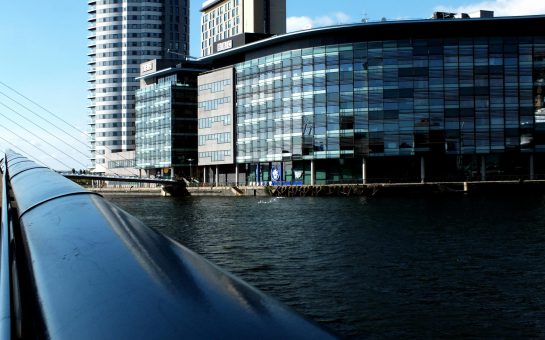Quicker disease detection, safer food packaging and reduced CO2 emissions from power stations could all be a step closer to reality following a £3.5million funding boost into Manchester graphene research.
The latest research grant to researchers at the University of Manchester comes just months after they were awarded £2.2million for studies into graphene batteries and supercapacitors for energy storage.
Wonder material graphene is the world’s thinnest, strongest and most conductive material.
It is hoped that it could provide solutions to worldwide problems such as reducing power station co2 emissions to detecting the chemical signals produced by agricultural pests.
Professor Peter Budd, of the School of Chemistry, said: “We will also be looking at practical ways of using the ability of graphene to act as a perfect barrier in, for example, food packaging, and we will be building graphene into sensors for detecting human diseases and agricultural pests.”
Graphene was first isolated in 2004 at the University of Manchester by Professor Andre Geim and Professor Kostya Novoselov – which earned them the Nobel Prize for Physics in 2010.
The material could, according to Professor Novoselov, revolutionise numerous aspects of our lives simultaneously, ranging from smartphones and ultrafast broadband to anticancer drugs and computer chips.
However, he warned that whilst some groundbreaking applications may appear within a few years, others still require years of work.
Professor Novoselov said: “Different applications require different grades of graphene and those which use the lowest grade will be the first to appear, probably as soon as in a few years.
“Those which require the highest quality may well take decades. Because the developments in the last few years were truly explosive, graphene’s prospects continue to rapidly improve.”
Professor Budd also explained that they have also invented a range of polymers – called Polymers of Intrinsic Microporosity (PIMs) – which form membranes that are very good for separating gases and organic liquids.
“These are of interest, for example, for removing carbon dioxide from power station flue gases, or for removing organic compounds from water,” he said.
“By combining PIMs with graphene, we expect to produce membranes with even better performance under long-term conditions of use.”
The research is being funded by the Engineering and Physical Sciences Research Council (EPSRC).
Meanwhile, the university is also building the £61million National Graphene Institute – a research hub where scientists and industry will work side by side developing revolutionary uses of the material for the future.
It is funded by the EPSRC and the European Regional Development Fund and is expected to open in spring 2015.
Picture courtesy of UCL Mathematics and Physical Sciences, with thanks.
For more on this story and many others, follow Mancunian Matters on Twitter and Facebook.



